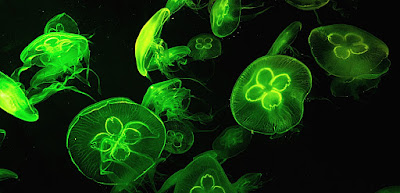Main Functions of Cytoplasm
The cytoplasm is a crucial part of both eukaryotic and prokaryotic cells, providing a suitable environment for cellular organelles to function properly.
The cytoplasm includes the cytosol (fluid part), the endomembrane system, the cytoskeleton, and various inclusions. It contains important structures like mitochondria, chloroplasts, plastids, the endoplasmic reticulum, the Golgi apparatus, lysosomes, vacuoles, microfilaments, microtubules, intermediate filaments, and centrioles.
Organelles within the cytoplasm perform essential tasks such as protein synthesis and energy production. The cytosol helps these organelles work effectively.
The cytosol also plays a key role in cell signaling, moving metabolites and molecules throughout the cell, and providing structural support to the entire cell.
Main Functions of Cytoplasm
- The cytoplasm provides support to the cell and suspends cell organelles and cellular molecules within it.
- The cytoplasm is the site for most of the metabolic reactions of the cells.
- Many metabolic processes occur in the cytoplasm like protein synthesis, the first stage of cellular respiration (known as glycolysis), mitosis, and meiosis etc.
- One of the important functions of cytoplasm is that it provides proper shape to cells. It fills the cells thus allowing the organelles to remain in place.
- The cytoplasm acts as a regulator and protects the cell’s genetic material as well as cellular organisms from damage by motion and collision with other cells.
- The cytoplasm contains many enzymes that are crucial in the breakdown of the waste products and to perform enzymatic reactions.
- Another important function of the cytoplasm is it is involved in the transportation and removal of waste products from the cells through vesicles.
- Glycolysis occurs in the cytoplasm. This reaction provides intermediates used by mitochondria to generate ATP.
- The main function of the cytoplasm is it allows cells to maintain their turgidity, which enables the cells to hold their proper shape.
- Translation of mRNA into proteins in ribosomes also occurs primarily in the cytoplasm.
- In cytoplasm cyclosis occurs also called Cytoplasmic streaming ( The process in which substances are circulated within a cell. ) Cyclosus occurs in a different types such as plant cells, amoeba, protozoa, and fungi, etc.
- Cytoplasm functions as a storage site, Various chemical molecules like lipids, fats, starch, etc) can be found floating within the cytoplasm.
- The cytoplasm is rapidly realigned during cell division and the microtubules are formed into a spindle that attaches to the chromosomes and separates them into two daughter cells.
- The cytoplasm also contains monomers that create the cytoskeleton, which is necessary for cells to have a specialized shape, in addition to being important for normal cell activities. For example, neurons with their long axons need intermediate filaments, fine tubes, and actin filaments to secure a frame.

